Millions of years before modern birds evolved, their dinosaur ancestors were soaring through the air.
Scientists are piecing together how these iconic reptiles took to the skies.
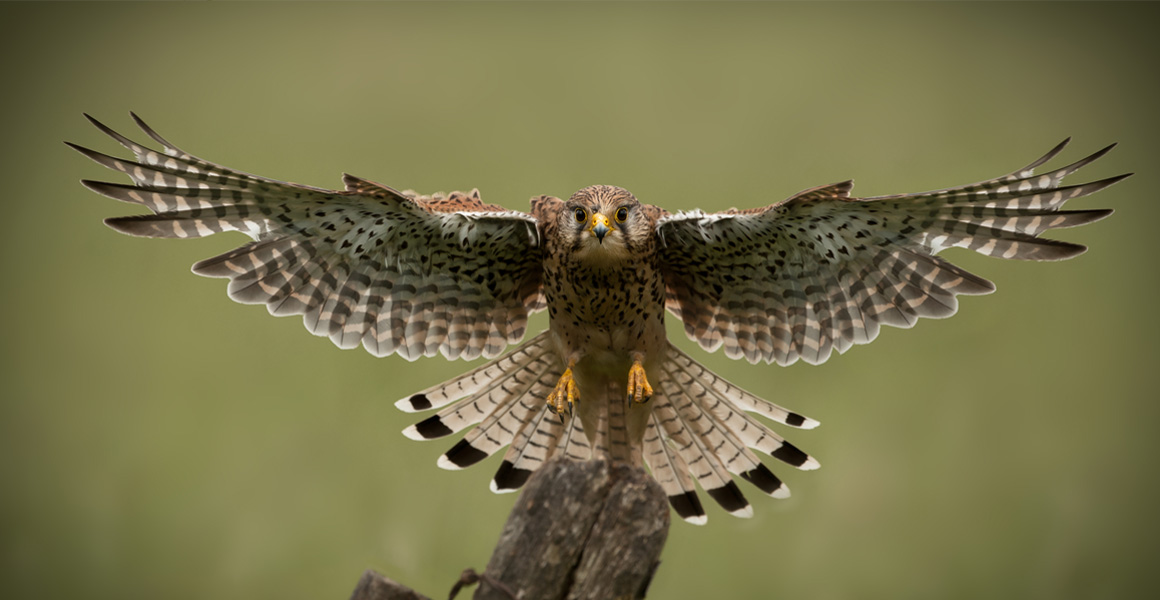
Flight evolved at least three times in theropod dinosaurs – the agile, meat-eating dinosaurs that include icons such as Tyrannosaurus rex and Velociraptor. The ones that took to the skies were much smaller and included the branch that gave rise to birds. © Andrew Astbury/ Shutterstock
Millions of years before modern birds evolved, their dinosaur ancestors were soaring through the air.
Scientists are piecing together how these iconic reptiles took to the skies.
Fossils reveal that bird-like dinosaurs were flying around more than 150 million years ago in the Jurassic Period.
The ability to fly evolved in the branch of dinosaurs that gave rise to birds, as well as in another closely related group – the dromaeosaurs, more popularly known as raptors.
The traits that enabled dinosaurs to fly evolved gradually over millions of years. To identify them and understand how dinosaurs evolved powered fight, we can look to their living descendants – birds.
Many animals, such as flying squirrels, frogs, snakes, fish and other gliding animals, can move through the air by unpowered flight. Besides bats, birds are the only living vertebrates capable of powered flight. So, what features help them to do this?
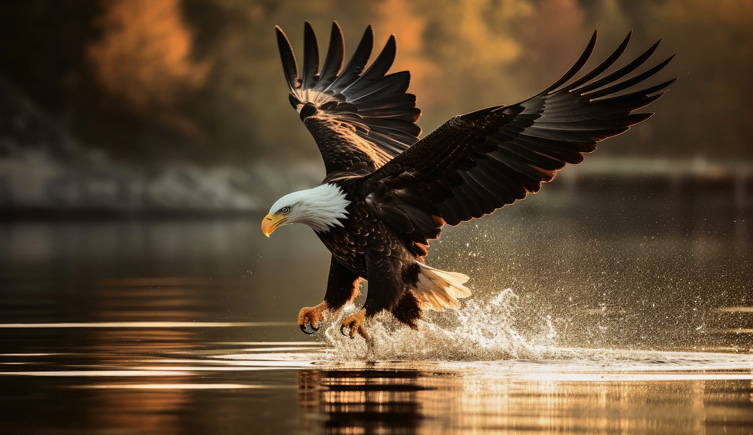
Traits required for flight, such as wings, a lightweight skeleton and flight feathers, evolved separately over millions of years. © MP_Foto/ Shutterstock
Flying birds have elongated limbs and finger bones that form wings, which they can flap using strong chest and wing muscles. Branching feathers cover most of their bodies and come in a variety of forms that serve specialised functions.
Birds’ wings have feathers that are stiff and flat. These are known as pennaceous feathers. In birds that can’t fly these feathers are symmetrical, whereas in birds that can fly they’re asymmetrical. Layers of asymmetrical feathers on the wings create a curved, streamlined shape – known as an aerofoil – which generates more lift than drag. This aerofoil helps to keep birds airborne, which is why aeroplane wings, tails and propellers use the same design.
The tail feathers of birds are also pennaceous, this time arranged in a fan shape. They can act as a rudder to help them change direction while flying. In some birds, however, tail feathers are used only for display purposes and aren’t involved in flying.
To fly, birds need to be lightweight, which is why many species are small. Having hollow, air-filled bones helps. On top of this, instead of a jawbone and teeth, they have a beak made of keratin, which is lighter than bone. All these things reduce the bird’s weight.
Some bird species around today, such as ostriches and penguins, can’t fly yet they evolved from a flying ancestor. Over time, these birds lost their ability to fly in response to a lack of ground predators, among other reasons.
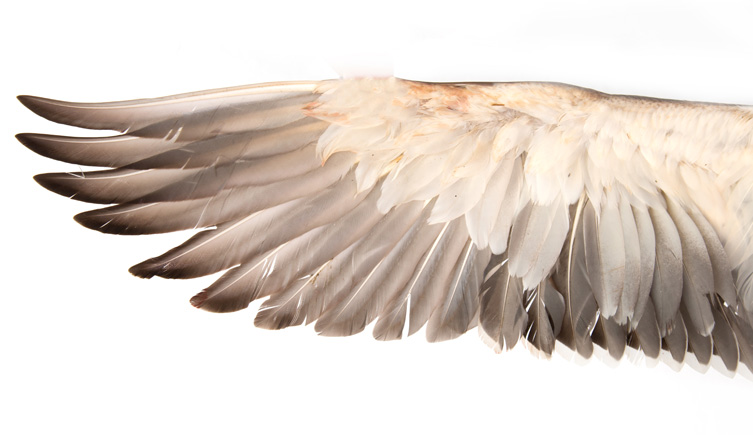
Dinosaurs evolved stiff, asymmetrical feathers known as pennaceous feathers, which can be seen on the wings of modern birds. © Bernatskaia Oksana/ Shutterstock
Scientists now believe that many dinosaurs had feathers, but that most of them couldn’t fly. The evolution of feathers was an essential step that led to the origins of flight in dinosaurs.
Living birds use feathers for more than just flight. They also play a role in insulation, display and camouflage. These were more likely the early drivers for the evolution of feathers.
Working out when and how feathers evolved is difficult, as soft material often doesn’t preserve well in fossils. But experts think feathers first appeared long before dinosaurs took to the skies.
Archaeopteryx is one of the oldest known bird-like dinosaurs discovered so far. It lived around 150 million years ago during the Late Jurassic. When its fossils were discovered in 1861, it was considered a remarkable discovery, as it had feathers that looked similar to the classic flight feathers seen in modern birds. At the time, birds weren’t known to have existed this far back.
But some scientists believe that feathers originated much earlier during the Middle Triassic Period – almost 100 million years before the first flying dinosaurs. However, these weren’t the complex structures we recognise as a classic feather, but much simpler structures that looked like tufts of hair.
This estimate followed the discovery that pterosaurs – a flying relative of dinosaurs – may have also had feathers. This suggests that the feature may have been present in the last common ancestor of pterosaurs and dinosaurs, which lived around 245 million years ago.
One theory suggests that these simple feathers might have evolved for insulation. Although there’s currently no fossil evidence of these Triassic feathers, we can look at more recent dinosaur species to get an idea of what these early feathers might have looked like.
Palaeontologist Professor Xu Xing was part of a study that described simple protofeathers, which are stiff, hair-like structures found on some dinosaur species.
“Beipiaosaurus was a small theropod dinosaur from the Cretaceous Period,” says Xu. “Fossils discovered in China show it had the simplest type of protofeathers. They give us an idea of what the earliest feathers probably looked like.”
“Over millions of years, some feathers evolved into the more complex structures that enabled dinosaurs to fly, including some that weren’t on the ancestral line that led to birds.”
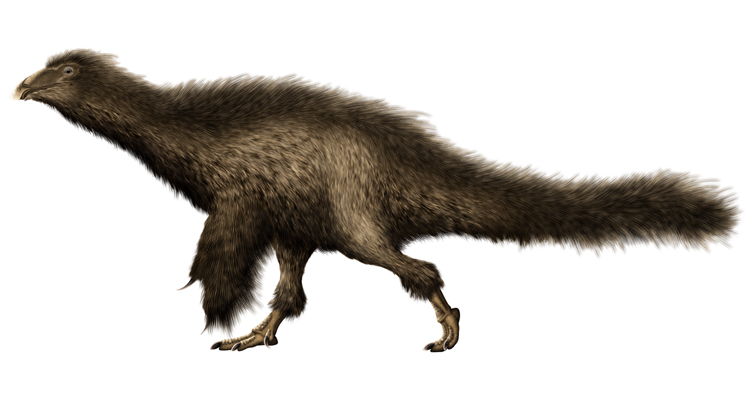
Fossils of the Cretaceous dinosaur Beipiaosaurus show it had simple protofeathers along its neck, which may resemble the earliest feathers. © PaleoNeolitic (CC BY 4.0) via Wikimedia Commons.
Like feathers, most of the other traits needed for flight also evolved long before the first birds. Scientists believe many of these features appeared at various points across the evolution of maniraptorans – the group of theropod dinosaurs that contains both birds and their closest relatives.
Modern birds have a specialised wing structure called a propatagium. It contains a muscle connecting the shoulder and wrist, allowing them to flap their wings. In flightless birds, the propatagium is missing or redundant.
Since the propatagium is made of soft tissue, it doesn’t fossilise well. So, to investigate its evolution, researchers studied the joints along dinosaurs’ arms, looking for angles that would suggest the presence of a propatagium. They found that it probably evolved in non-avian maniraptorans, but researchers are still trying to understand why and how.
There’s also evidence that theropods got smaller across the evolutionary lineage of birds. This trend towards a lighter body is thought to have been critical in the evolution of flight.
The development of hollow bones with air-filled cavities came early in the history of dinosaurs. Hollow bones might have first appeared as early as the Middle Triassic, around 245 million years ago in the last common ancestor of dinosaurs and pterosaurs.
Hollow bones evolved independently in multiple groups of extinct ornithodirans, a group of reptiles more closely related to birds than crocodiles. This included pterosaurs, sauropods and theropods. They likely evolved to circulate more oxygen in the blood. This enabled sauropods to become large and keep cool in the warm climate. They also kept theropods light and nimble, which was ideal for hunting, fighting and, eventually, flying.
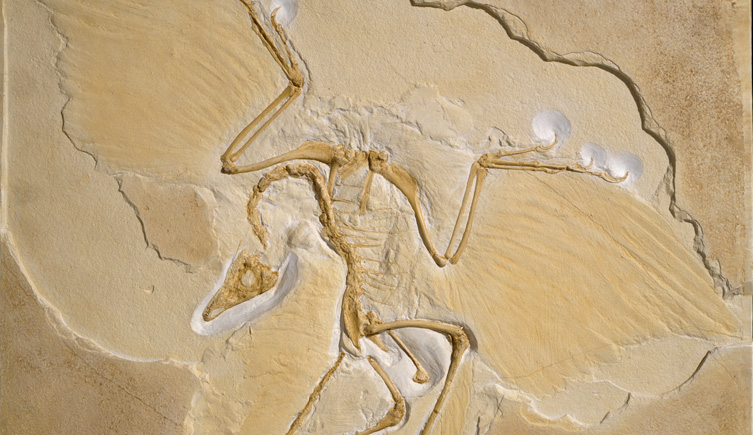
When a fossil of Archaeopteryx was discovered in 1861, it was the oldest evidence of a bird-like creature with complex, pennaceous feathers.
Many ideas have been shared about how flying dinosaurs evolved and what primitive wings were used for before they were capable of true powered flight. Most of these ideas can be divided into two main theories – the ground-up theory and the trees-down theory.
The ground-up theory suggests that fast, ground-dwelling theropods flapped their wings to gain height and to stay balanced while running up steep slopes and that it was this that led them to take off and begin flying. Critics of this theory point out that the dinosaurs would have needed to run at very fast speeds to gain liftoff.
The alternative, and slightly preferred theory, is the trees-down theory. This suggests that tree-dwelling dinosaurs climbed up to the upper branches, jumped off and then used their wings to glide through the forests, which then led to flying.
Some scientists, including Xu, believe it may have been a combination of the two. “I think the question we want to ask is whether early flight was gliding or flapping dominant,” says Xu. “It’s a combination rather than just one or the other.”
“We can observe this in modern birds. Some species are not good flyers, but they can glide a short distance with some flapping involved to help them stay airborne. I believe that early flight was likely gliding dominant, but with some flapping behaviour.”
Whichever method was adopted by these early flight pioneers, both could have helped dinosaurs to either evade predators or catch insect prey. Those that remained airborne longer would have had a better chance of surviving and passing on their genes.
The discovery of Microraptor gui offered some support to the trees-down theory. This crow-sized dinosaur lived during the Early Cretaceous. It was unusual because flight feathers covered both its arms and legs.
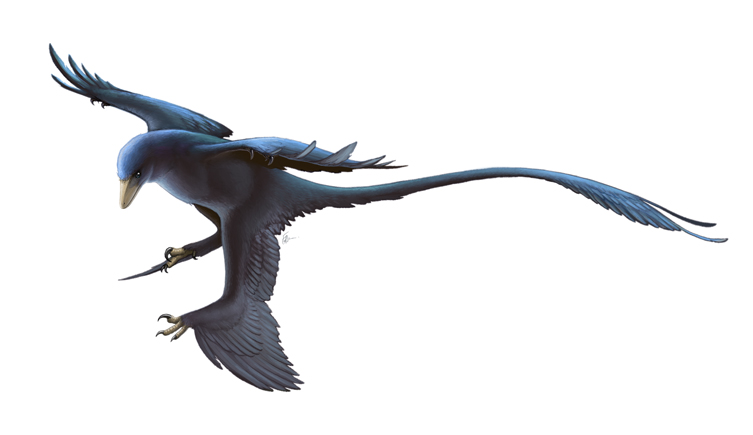
Microraptor fossils support the theory that dinosaurs may have climbed trees and then used feathered wings to fly above the forest floor. © Fred Wierum (CC BY-SA 4.0) via Wikimedia Commons.
Scientists believe having two sets of feathered limbs would have made running along the ground impractical. Instead, Microraptor may have used its sharp claws to scurry to the tops of trees and from there glide to catch insects. Its tail feathers may have helped it to steer through the forest on its way to the ground.
Although Microraptor isn’t on the same evolutionary lineage as birds, some scientists believe it could represent the intermediate gliding stage that dinosaurs went through on the way to powered flight. People are still debating whether Microraptor was also capable of powered flight. The presence of various anatomical features, including a propatagium, suggest it was. As do experiments showing the wings were capable of generating lift.
Dinosaurs aren’t the only animals that evolved powered flight. We know this trait evolved separately in at least four different animal groups – dinosaurs, pterosaurs, bats and insects.
In dinosaurs alone, it may have evolved at least three times across birds and their closest non-avian relatives. Some scientists believe it may have also originated in early members of another group – the Pennaraptorans – then been lost multiple times in their evolution.
Powered flight is a prime example of convergent evolution – where the same trait evolves in distantly related groups. This often occurs as a solution to a similar problem. But the drivers behind why and how flight evolved could differ between the various animal groups.
There are many suggestions for why flight evolved in dinosaurs. These include that it helped them to escape predators, to catch flying or fast-moving prey or to travel in order to exploit new food sources or habitats.
Whatever it was that originally drove dinosaurs to take to the skies, flight may be the reason they still live on today as birds. Many scientists credit the ability to fly as a likely reason why they survived the mass extinction event at the end of the Cretaceous, enabling them to travel vast distances to find better conditions.
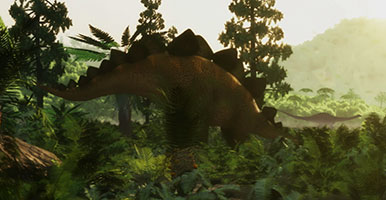
Find out what our scientists are revealing about how dinosaurs looked, lived and behaved.
Did you know we have on-demand courses available now? Live your dream and become a palaeontology pro with our expert scientist.
Don't miss a thing
Receive email updates about our news, science, exhibitions, events, products, services and fundraising activities. We may occasionally include third-party content from our corporate partners and other museums. We will not share your personal details with these third parties. You must be over the age of 13. Privacy notice.
Follow us on social media